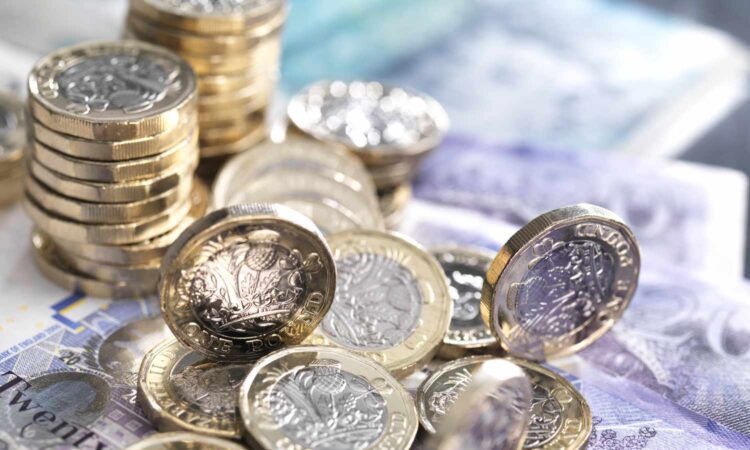
Financial news events produce two main benefits for trading the British pound. The first is an obvious trend, while the second is higher liquidity. Financial news can come at unpredictable times, but much of it is released on a regular schedule by financial institutions and governments.
Key Takeaways
- Financial news events produce two main benefits for trading the British pound, an obvious trend and higher liquidity.
- There are major financial events, such as Black Wednesday and Brexit, that impact the direction of the British pound for years.
- Most monthly economic data from the United Kingdom comes out between 2 a.m. and 4:30 a.m. Eastern Time in the United States, making this a good time for trading.
- Central bank interest rate announcements, which usually take place at regularly scheduled times, also have a powerful influence on exchange rates.
- Stock market operating hours and price action can significantly impact the British pound.
Currency Pairs and Trading Hours
The British pound sterling (GBP) is the fourth most widely traded currency in the world, behind the U.S. dollar (USD), the euro (EUR), and the Japanese yen (JPY). The GBP also ranks third in globally held reserves. GBP traders speculate on strength and weakness through currency pairs that establish comparative value in real-time. Although forex brokers offer dozens of related crosses, most clients focus their attention on the four most popular pairs:
- U.S. dollar: GBP/USD
- Swiss franc: GBP/CHF
- Japanese yen: GBP/JPY
- Euro: EUR/GBP
The GBP trades continuously from Sunday evening to Friday afternoon in the United States, offering significant opportunities for profit. However, volume and volatility vary greatly in each 24-hour cycle, with spreads widening in slow periods and narrowing during active periods. While the ability to open and close positions at any time marks a forex benefit, the majority of trading strategies work best in busy periods.
British Pound Price Catalysts
The best times to trade this instrument track the release of critical economic data as well as open hours at equity, options, and futures exchanges. Planning for these releases requires two-sided research because local (U.K.) financial news can move popular GBP pairs with the same intensity as news in other venues.
In addition, the pairs are highly susceptible to economic and political macro events that trigger highly correlated price action across equities, currencies, and bond markets around the world. China’s devaluation of the yuan in August 2015 offers a perfect illustration. Even natural disasters have the power to generate this type of coordinated response, as evidenced by the 2011 Japanese tsunami. The 2020 bear market in stocks also led to dramatic swings in currency values as the carry trade collapsed.
There are also major financial events, such as Black Wednesday and Brexit, that impact the direction of the British pound for years. Currency traders can make an enormous amount of money by betting on the right direction. However, it is crucial to get out of the wrong side of these trades quickly.
It is essential to have an exit strategy, such as a stop loss, when making highly leveraged currency trades.
It is essential to have an exit strategy, such as a stop loss, when making highly leveraged currency trades.
Economic Releases
The majority of monthly economic data from the United Kingdom comes out between 2 a.m. and 4:30 a.m. Eastern Time in the United States. Thirty to 60 minutes before these releases and one to three hours afterward highlight the best times to trade the GBP because the news flow will impact the pound’s value. The majority of European data becomes available around the same time as U.K. data. That makes it an excellent time to trade European currency pairs.
U.S. economic releases usually occur between 8:30 a.m. and 10 a.m. Eastern Time and also generate extraordinary GBP trading volume. There are good odds for strongly trending price action in several or all of the pairs. Japanese releases receive less attention because they occur when the United Kingdom is in the middle of its sleep cycle.
British Pound and Equity Exchange Hours
Many GBP traders’ schedules roughly follow exchange hours, with most of their activity occurring when Frankfurt and New York equity markets are open for business. This localization generates an increase in trading volume around midnight on the U.S. East Coast, continuing through the night and into the American lunch hour when forex trading activity can drop sharply.
However, central bank agendas shift this activity cycle with forex traders worldwide staying at their desks when the Federal Reserve (FOMC) is scheduled to release a 2 p.m. interest rate decision or the minutes of the previous meeting. The Bank of England (BOE) issues its rate decisions at 7 a.m., and the European Central Bank (ECB) follows at 7:45 a.m., leading to high activity.
What Time Is the GBP/USD Pair Most Volatile?
The GBP/USD market is usually most volatile between 2:00 a.m and 12:00 p.m Eastern Time.
Is GBP Stronger Than USD?
The British pound has historically been stronger than the US dollar. As of June 28, 2023, the exchange rate is 1 GBP/1.27 USD. However, experts point out that past performance is not a reliable indicator of future results.
What Is the Prediction for GBP/USD in 2023?
The GBP/USD pair is forecast to fall to 1.16 in September 2023 and to 1.15 in December 2023.
Is EUR/GBP a Good Pair to Trade?
The EUR/GBP pair is very popular in the forex market and one of the most traded currency pairs. With excellent liquodity, it’s also one of the most profitable pairs.
The Bottom Line
Four popular currency pairs offer British pound sterling traders a wide variety of short and long-term opportunities. The best times to trade these instruments are centered around key economic releases, when European and American exchanges keep all cross markets active and highly liquid.



